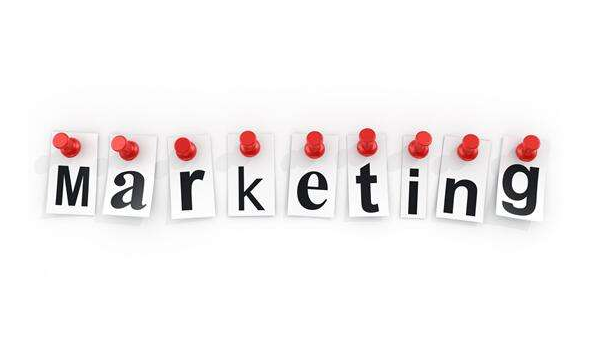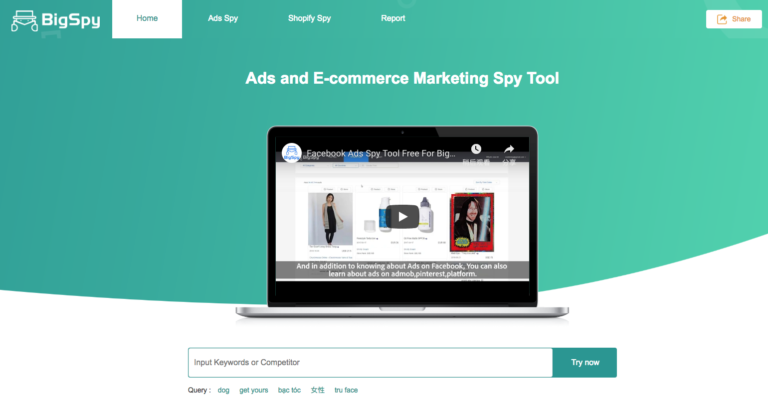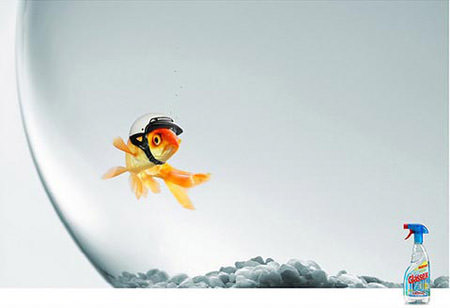Facebook Ad Optimization: 5 Ways To Improve Facebook ROI
I saw such a post in the Facebook group before, about local business type:
I’m managing a restaurant’s social media and am also running ads for them. The ad budget is £350 per month and for this, I’m getting around 220k impressions & 1.2k engagement per month.
I post content 4 times per week and create ads for them each by going into the ads manager and then setting up an objective, budget, audience, etc, and then selecting existing or scheduled posts and promoting them like that.
I am creating a new campaign, ad set & ad for each post that I paid to advertise.
Is this the best way to do it or should I only be creating them as new ad sets within say a larger ‘engagement’ or ‘reach’ campaign?
I’m also getting around £0.40 – £0.20 per engagement. I’ve seen others getting £0.03 per engagement. Where am I going wrong?
I can’t find this info on Google about ad structures, only for ecommerce, etc, nothing for restaurants or local business type clients.
Just looking to improve where I can to get the best results.
One of them answered the question by saying:
For ads most important metric is conversion if they need to drive guests into the restaurant Engagement with a post is more for general awareness and ideally, you would want to do something with this warmed up audience after they liked/commented/shared… this is the custom audience that you want to retarget to.
Cost – don’t compare to others. Costs are driven by local competition so ads in NY most likely will be more expensive than in Darwin, Australia
Make sure that quality scores of your ads are high – this will drive the cost down too
Yes, his answer is correct, the conversion cost varies from region to region, but does this mean there is no way to optimize your advertising?
No, there is no end to optimization!
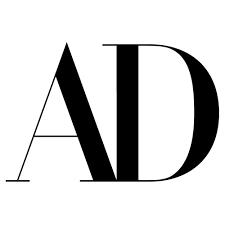
The first step in optimizing your Facebook advertising account is to know what a successful ad looks like. Know how to compete.
I used a free Facebook ads spy tool to find a competitor’s ad, called BigSpy, the category is “Restaurant”, then select “Sort By Like”, find the most popular ads, get the following results.
You can see the food advertisement pictures that can attract users. The copy used is “Kapag intense and craving” and “Indulge in our expansive selection of dishes”.
The cta types used are “SEE_MENU”, “LEARN_MORE”, “MESSAGE_PAGE “, and the like.
You can also continue to use BigSpy to learn more details, choose your country, for example: the United States, the picture style is the picture, the creation time is the last six months, sorted by user sharing. Conduct a competitor analysis again to see how long these ads are running and how much interaction. Let’s take a closer look at what images or videos these users use, see what users are saying, what they think about these ads, what are the MESSAGE_PAGEs used for these ads, and so on, and only better understand the competitors. Make ads that users like.
Step 2: Content and copy
Update content four times a week, not just to update content, the most important thing is to understand what your users like? See how many ads work best in how many creatives. You can also see which of the other people’s materials is the best.
For readers, excellent marketing copy not only has strong reading value but also has entertainment and emotional value, which can arouse readers’ emotional fluctuations and stimulate their interactive desire for comments and reposts. On the other hand, it can arouse the interest of other media, reprint in succession, and trigger social discussion.
This level of soft text writers are often from the perspective of a third party, also clearly understand the interests of readers and potential users, and can be fully expressed in the article. In fact, there are not many advertorial writers who can reach this level. They are also excellent marketing advertorial writers.
Find out the features and core functions of the product and extract them all, which is a must, otherwise, you don’t know your own product and can’t relate to it at all. No one knows his products better than jobs.
Then, the user finds known objects and establishes a cognitive association with known objects.
Users are more likely to remember what makes sense to them or what they have known before and tend to see what they want to see.
Only after the user establishes the full cognition and understanding of the product itself, can the various advantages and the selling point of your real interest, and then more willing to pay!
Ogilvy, the great writer, has written in many books that he hates empty adjectives and loves facts, amazing facts.
One of his most famous works is a Rolls-Royce advertisement: the loudest noise in the 60mph Rolls-Royce is its electronic clock.
A short sentence shows the product facts incisively and vividly.
A lot of vague and abstract information is difficult for users to establish cognition, let alone generate trust, but a detailed description can help users to visualize the content, and generate images.
Other people’s choices can have a huge impact on our decisions, so customer testimonials are important. However, it is not difficult to collect testimonies from customers, and it is important to select testimonies that reflect the core needs of customers.
If you don’t have a specific idea, try BigSpy, which is also a library of advertising materials where you can find content that suits you.
Step 3: the choice of Marketing Objectives
If your ad is a sales target, the conversion is always the ultimate goal of your ad. If you convert to an optimization goal, FB will optimize the ad toward the optimal conversion result.
If you don’t know or are unsure of what goal you are using to optimize the ad group, you can create two different optimization goal observations.
For example, the restaurant owner mentioned above, Marketing Objectives changed to engagement or reach, this can try, expand more people, reduce the advertising fatigue of the audience, can not always advertise for a group of users, which will cause advertising fatigue.
The phenomenon of fatigue in advertising is very serious. The advertising audience is no longer fresh to the advertisements, the click-through rate will naturally decline, and the cost per click will increase. At this time, we need to expand the population.
Step 4: the division of the audience
Don’t create many different ads and target similar audiences. Don’t put all the ads into one audience. After all the money is spent, it will have no effect. We should divide the crowd. For example, people who are interested in dining should accurately advertise. For example, your restaurant is a healthy meal. Then, your precise users should also include people who like fitness; if your restaurant dessert is very special, then your audience should be more biased towards the female group; if your restaurant is fast food, the target group should include the working people.
The above examples are just a description of a problem, the population should be wide, but it is necessary to divide the precise population, and maybe the target customer population, and adopt different advertising methods for these people. In order to find accurate users, we must have a deep understanding and understanding of our products, accurate users count our main target group, but also to advertise to potential people.
The biggest factor affecting advertising is the audience. Everyone needs to test more.
Core audience – target audiences by default region, age, gender, device usage, revenue level, etc.
Custom Audience – Target users who have interacted with FB ads, websites, and the list of people you already have
Class definition audience – an audience that can be targeted and selected with a similar audience.
Step 5: budget adjustments
We usually have a budget cap, so here are some tips on budgeting.
One: To schedule ads for a specific time of day or a specific day of the week, make sure you choose to use your total budget and then:
1) go to the “time slot” section of the advertising group creation process
2) select the time period to release
Note: you may need to click show advanced options first
3) click on the drop-down menu and choose whether to schedule using the time zone of your AD account or the time zone of your audience
Note: you can also view AD reports using the “time to place (AD account time zone)” or “time to place (viewer time zone)” filter
4) choose the time of day (at least one hour each) and the day of the week
You can edit AD groups and change schedules at any time.
Conversion time window involves two elements:
Timespan (e.g. 1 day, 7 days)
Type of action (e.g., click, view)
Important note: transformations that occur outside the time window will not be used to optimize advertising.
Two: increase daily or lifetime budgets by 200% to 500% when launching a new AD.
Instead of opting for ‘Accelerated Delivery,’ Facebook focuses on speed rather than quality and cost.
When the display reaches 10,000+, you can start analyzing the results to see if the AD fits your needs.
You can get it in 48 hours, not three days or more. After the original AD takes off, you can change your budget back to the amount you planned.
Mark: the time for testing the advertising group must be greater than or equal to 24 hours, and there will be time zone deviation. When we tested the small-budget test, we defined the observation time to 48 hours (CPC <0.5, the evaluation standard for defining 48 hours, plus purchase, and payment interface).
In the process of budget adjustment, you can use Facebook ads cost analysis tools. For example, ADCostly provides average CPC, CPM, CTR and CPA for different industries and time. Detailed data can quickly provide a benchmark for advertising, and the CPC and CPM of Facebook’s interest will also be displayed.
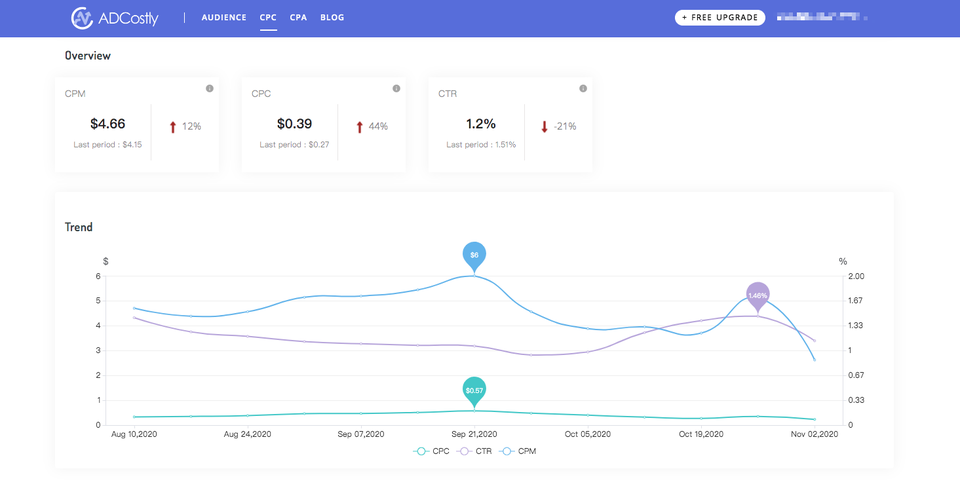
Facebook advertising is constantly being updated, and we will have more and more optimization methods. There is no end to optimization, and what suits us is the best. In the optimization process, some Facebook ad spy tools, such as BigSpy, can be appropriately combined. Better results!
